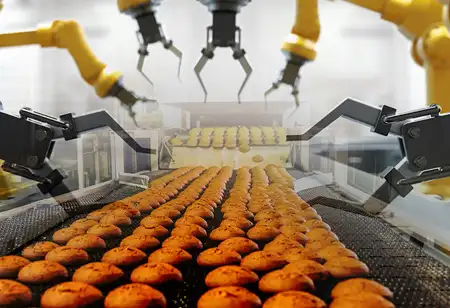THANK YOU FOR SUBSCRIBING
Be first to read the latest tech news, Industry Leader's Insights, and CIO interviews of medium and large enterprises exclusively from Food and Beverage Tech Review
Key Trends Shaping Food Delivery
The significant trend in the food delivery industry is projected growth.

By
Food and Beverages Tech Review | Thursday, January 09, 2025
Stay ahead of the industry with exclusive feature stories on the top companies, expert insights and the latest news delivered straight to your inbox. Subscribe today.
The food delivery industry is experiencing unprecedented growth and presents an immense opportunity for restaurants and grocery stores to expand their customer base and increase revenue.
FREMONT, CA: The significant trend in the food delivery industry is projected growth. The industry is expected to grow at an impressive rate of over 25 percent per year, reaching an astounding $2.15 trillion by 2030. The pandemic significantly accelerated the development of online food delivery, making it a standard practice for restaurants and grocery stores. The move allows them to maintain control over the delivery process, ensuring consistent and quality customer experiences. By using delivery management platforms with automation, restaurants can efficiently manage their delivery operations, even on a large scale, with thousands of orders daily.
Apart from significant chains, many restaurants collaborate with third-party providers, offering various meals from various restaurants. Some companies are utilizing their existing infrastructure for food delivery, leveraging their expertise in transportation. With the increasing demand for convenience and quick service, online food delivery has become essential for consumers. Despite the rise of in-house food delivery platforms, third-party delivery services are also experiencing significant growth. Although third-party options are expanding, several restaurants and grocery stores are opting to develop their in-house delivery management platforms.
Traditional grocers face the challenge of competing with retail giants which dominate the market. Brick-and-mortar grocers can still offer competitive services by using their physical stores as fulfillment centers. While meal delivery grew substantially during the pandemic, grocery delivery is expected to grow even faster in the coming years. Some larger chains are establishing ghost supermarkets in urban locations, catering exclusively to online customers, which allows for faster and more convenient fulfillment options. With a significant portion of delivery operations handled by third-party providers, food companies are collecting and analyzing data to gain insights into their delivery performance.
Customer data is crucial in improving efficiency, reducing costs, and enhancing the overall customer experience. By having better visibility and control over their delivery operations, businesses can optimize relationships with external fleets and aggregators and provide seamless deliveries, benefiting other aspects of their operations, including customer care, marketing, and branding. To achieve long-term success, they must carefully balance the demands of fast and convenient delivery with the complexities and costs associated with meeting these expectations.
I agree We use cookies on this website to enhance your user experience. By clicking any link on this page you are giving your consent for us to set cookies. More info


However, if you would like to share the information in this article, you may use the link below:
https://www.fbtechrevieweurope.com/news/key-trends-shaping-food-delivery--nwid-1661.html





